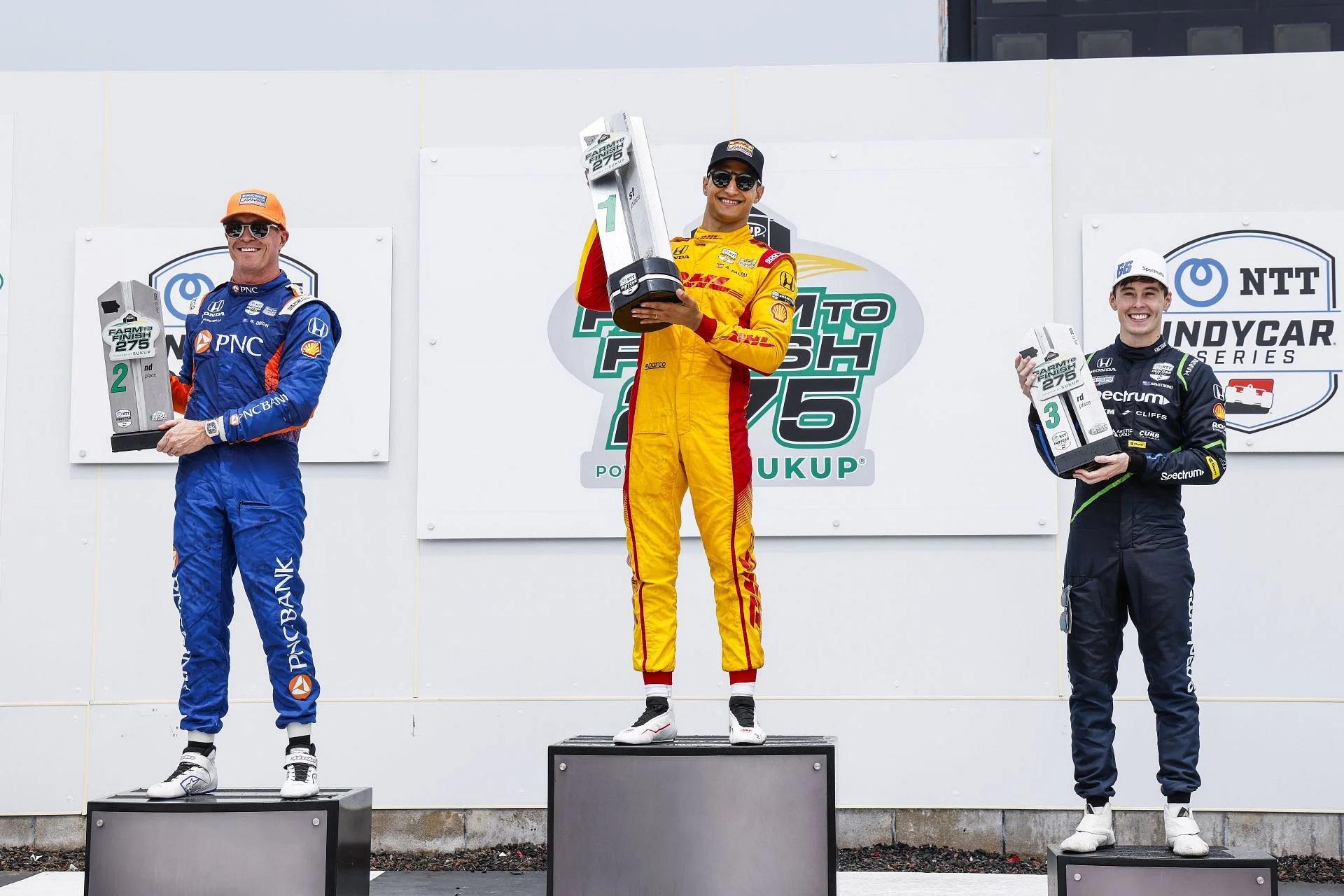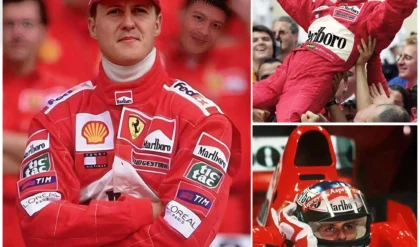The IndyCar world was rocked this week with news that Scott Dixon, the six-time series champion and one of the sport’s most revered drivers, has been handed a six-place grid penalty for the upcoming Honda Indy Toronto race. The penalty, announced on July 18, 2025, stems from an unapproved engine change following the Iowa Speedway doubleheader, marking yet another chapter in Dixon’s challenging 2025 season with engine reliability. This development not only complicates his race strategy but also raises questions about his team’s approach to the remaining races, with fans and analysts buzzing about the implications for both Dixon and Honda’s championship aspirations.

The penalty comes as a result of Dixon’s No. 9 Chip Ganassi Racing car exceeding the IndyCar rulebook’s limit of four approved engines per season. According to Article 16.1.2.3.2 of the IndyCar regulations, any car that uses a fifth engine or beyond during the championship season forfeits its ability to earn points for the engine manufacturer’s championship and faces a six-place grid penalty for each unapproved change. Dixon, who had already switched to his fifth engine in Detroit earlier this season, was forced to install his sixth Honda engine for Toronto, triggering the latest penalty. This marks his second six-place grid drop of the year, a frustrating repeat for the New Zealander who has been plagued by engine issues since the pre-season.
Dixon’s engine woes began early in 2025, with his first approved motor failing just two laps into the final pre-season test. By the time the season opener rolled around, he was already on his second engine, and the rapid progression through his allocated engines has left Chip Ganassi Racing scrambling. As reported by RACER, Dixon’s team went through their third and fourth engines in May, and the fifth was installed for the Detroit race in June, where he also incurred a grid penalty. With five races remaining after Toronto, there’s a real possibility that Dixon could face yet another engine change and penalty before the season concludes, a prospect that could further dent his championship hopes.

Despite these setbacks, Dixon’s on-track performance has remained formidable. The 44-year-old veteran, often dubbed the “Iceman” for his cool-headed racing style, has shown why he’s a fan favorite and a perennial contender. Earlier this month, he capitalized on a rare mistake by his teammate Alex Palou to claim victory at the Mid-Ohio Grand Prix, marking his first win of the 2025 season. Following that triumph, Dixon delivered a strong second-place finish behind Palou at Iowa Speedway, where he praised Honda’s performance in a post-race interview: “It was a great day. Ours was a little difficult, we kind of threw the kitchen sink at it to start with.” His ability to extract maximum performance from his car, even amidst mechanical challenges, underscores why he remains a force in IndyCar.
However, the Toronto penalty throws a wrench into Dixon’s momentum. The Exhibition Place street circuit, known for its tight corners and limited passing opportunities, is not a track where starting further back is ideal. A six-place grid drop could significantly hamper his chances of a strong finish, especially in a season where consistency has been key. Dixon currently sits third in the championship standings, and while his recent results have kept him in contention, every point matters in the tightly contested IndyCar Series. The penalty also impacts Honda’s pursuit of the engine manufacturer’s championship, as Dixon’s car has been ineligible to contribute points since the Detroit race.
The IndyCar rulebook’s strict engine regulations are designed to ensure reliability and fairness, but they’ve sparked debate among fans and insiders. Unlike Formula 1, which only imposes grid penalties for engine changes, IndyCar’s rules also affect manufacturer points, adding an extra layer of consequence. Some argue that the penalties are too harsh, particularly for a driver like Dixon, whose engine failures have been largely out of his control. Others see it as a necessary measure to maintain the series’ competitive balance. Marshall Pruett, a veteran IndyCar journalist for RACER, noted the severity of Dixon’s situation: “The six-time IndyCar Series champion’s luck with engines has been nothing less than miserable this year.” This sentiment echoes across social media, where fans have expressed sympathy for Dixon while questioning the fairness of the rule.

Dixon himself has remained characteristically stoic about the penalty, focusing instead on the race ahead. In a statement shared via IndyCar’s official site, he acknowledged the challenge but remained optimistic: “It’s not ideal, but we’ll work with what we’ve got. Toronto’s a tough track, but we’ve had success here before.” Indeed, Dixon’s track record at Toronto is impressive, with multiple podiums and a win in 2018. His experience and strategic acumen could help mitigate the penalty’s impact, but it will require a flawless performance from both driver and team.
The broader context of Dixon’s season adds intrigue to this storyline. At 44, he continues to defy age, competing at the highest level against younger drivers like Palou and Pato O’Ward. His Mid-Ohio victory extended his record of winning at least one race in 21 consecutive IndyCar seasons, a testament to his enduring skill. Yet, the engine penalties have cast a shadow over what could have been a dominant campaign. Posts on X reflect the fanbase’s mixed emotions, with some praising Dixon’s resilience while others lament the recurring mechanical issues. One user wrote, “Dixon’s still got it, but these engine penalties are killing his season. Honda needs to sort this out.”
For Chip Ganassi Racing, the penalty is a blow but also an opportunity to showcase their adaptability. The team has a history of overcoming adversity, and their pit strategy and car setup will be critical in Toronto. Dixon’s teammate, Alex Palou, who leads the championship, has also faced engine-related penalties this season, highlighting the broader challenge for Honda-powered teams. The manufacturer’s rivalry with Chevrolet in the engine championship adds another layer of stakes, as every race without points from Dixon’s car weakens Honda’s position.
As the Honda Indy Toronto approaches, all eyes will be on Dixon to see if he can navigate the penalty and deliver another masterclass in street racing. The event, set for July 20, 2025, promises to be a thrilling chapter in the IndyCar season, with Dixon’s battle from the back of the grid adding an element of drama. Fans on social media platforms like Facebook are already buzzing with predictions, many eager to see if the “Iceman” can pull off a comeback. The circuit’s challenging layout and Dixon’s never-say-die attitude make for a compelling narrative that’s sure to captivate audiences.
In the grand scheme of Dixon’s illustrious career, this penalty is just another hurdle. With six championships and an Indy 500 victory in 2008, he’s no stranger to overcoming obstacles. His ability to stay competitive despite mechanical setbacks speaks to his talent and determination. As he prepares for Toronto, Dixon’s focus will be on extracting every ounce of performance from his No. 9 Honda, proving once again why he’s one of IndyCar’s all-time greats. Whether he can turn this penalty into a podium—or even a win—remains to be seen, but one thing is certain: Scott Dixon’s story is far from over, and the Toronto Grand Prix will be another chance for him to etch his name deeper into motorsport history.





